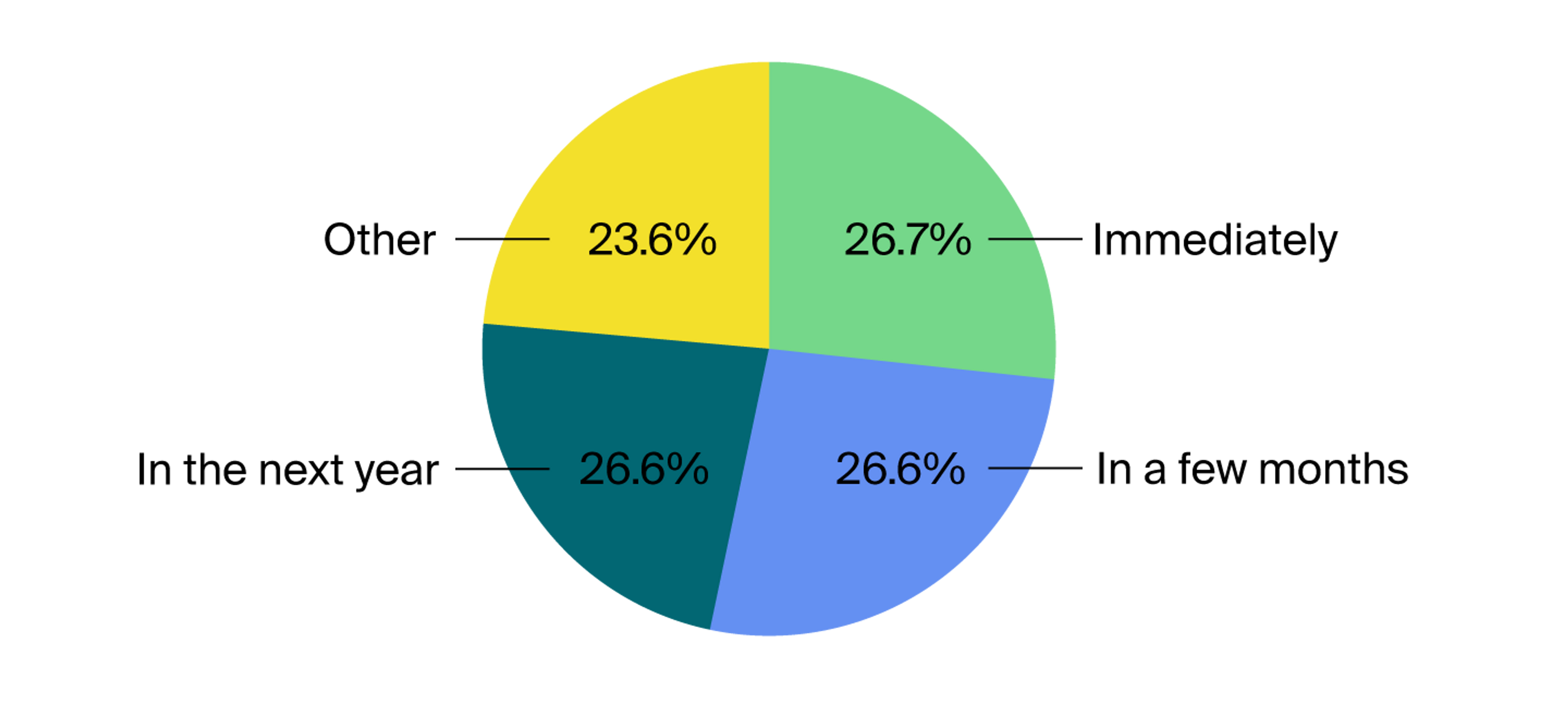The idea of life without the pandemic went from seeming bleak in the beginning of the year to becoming a not-so-distant glimpse into our promising future.
With millions of COVID-19 vaccine doses administered daily, production to fight the pandemic has only accelerated. Today, all 209,000,000 adults in America (including college students and recent grads) are eligible to receive the vaccine.
As schools prepare to reopen their doors and welcome back vaccinated students, employers are begging the question, “How do we best recruit early talent safely and equitably beyond the pandemic?”
Once a largely in person process, campus recruiting is mostly digital today. And with conversations around social equity taking center stage, digital has become a reliable way to increase an employer’s reach to more talent, including from underserved groups—especially as skilled labor shortages lead to increased competition among employers looking to fill their open headcount.
Higher education institutions set their intent to reopen
Colleges and universities, which are reeling from an estimated $183 billion loss, see the prospect of an in-person return as a beacon of hope and opportunity to more deeply engage with their students.
Budget cuts this past year associated with declining enrollment, tuition discounting, and athletic suspensions have compelled schools to prove their value. And while they've worked tirelessly to overcome these obstacles, they’re now eager to get back on campus with robust plans.
Meanwhile, employers are keen on learning just how their partner schools plan to reopen to make an informed decision about their own recruiting strategies. But just because the majority of schools plan to reopen, doesn’t mean all activity will be centered on campus. "Normal" will look a little different.
As pandemic-related travel bans remain in place throughout the rest of the world, international students will face logistical hurdles in entering the country. And students with serious medical conditions may be unwilling or unable to return, putting their traditional college journey at greater risk and placing a damper on equitable experiences.
For students who are planning to return to life on campus, building capacity, public health, and safety measures, including wearing masks, distributing hand sanitizer, and allowing for social distancing in and outside of the classroom, will be strictly enforced. Students may even be placed on alternating schedules in order to limit on-campus exposure.
To better accommodate the needs of all students, a March Handshake poll of 246 higher ed professionals found that 47% will adopt a hybrid of virtual and in-person programming, 17% will opt for virtual-only, and 2% will opt for in-person programming only. Less than one third remain unsure.
In response, employers are turning to networks like Handshake, home to 8m+ active students across 1,100+ schools, to ensure fair employment opportunities for all students by expanding access to their job opportunities and reaching qualified students anywhere, regardless of their visa, health, or socioeconomic status. They’re also leaning on platform analytics to inform the ROI of their school partnership and career event strategies.
Preparing students for the future of work
The discussion around reopening and returning on campus may be at the forefront of campus recruiting agendas, yet a larger conversation around the skills gap is still brewing. Today’s college students and recent grads, largely composed of Gen Z, are entering a job market largely reminiscent of the one their predecessors joined 13 years prior.
The Great Recession contributed to the underemployment of millions of millennials back in 2008, and today, about one-third of young workers are underemployed—a figure that is slightly higher for underrepresented groups. The difficulties of finding a job are magnified in an economic downturn, especially for emerging professionals with limited work experience.
If the employment challenges resulting from the pandemic aren’t addressed, the next few years could have detrimental effects on Gen Z’s purpose and mobility. Compounding this reality, students now have to also consider collaborating and operating in a far different world and work environment than what they’ve spent their whole lives preparing for.
The real question isn’t about whether you should return on campus. It’s about preparing students for the future of work, and creating programs that mimic the environments they’ll need to adjust to. According to a survey from Enterprise Technology Research, IT decision-makers expect permanent remote work to double YoY to nearly 35% of their company’s workforce in 2021.

A quarter of students are hesitant to return to the office in 2021.
With nearly a quarter of students hesitant to return to the office in 2021, Gen Z doesn’t only want to hear about your approach to reopening—they need help from employers to build the necessary skills to succeed in today's hybrid work environment. In the likelihood of continued remote work, digital collaboration will remain paramount.
The preferred recruiting model beyond the age of reopening
Paired with proprietary network data, Handshake’s expertise is reliant on an ongoing series of conversations with our partners to help employers address and navigate trends and accomplish their hiring goals.
In order to drive the most data-driven, equitable, and qualified outcomes, 80% of Handshake’s employer partners will prioritize a digital-first or hybrid approach to recruiting this fall and beyond to reach a larger pool of students.
A digital strategy ensures employers reach students regardless of disability, visa status, or reason for not being on campus. More broadly, a digital-first strategy extends an employer's network reach, helping them recruit a more equitable workforce while preparing Gen Z for the future of remote collaboration.
This fall, employers will look to democratize access to their jobs by participating in digital activities, like school-sponsored virtual career fairs or employer-hosted virtual events, at the top of their recruiting funnel, allowing them to expose their brand to students nationwide and bring in the most talented into their pipeline.
Due to the complexities associated with on-campus travel and entertainment (T&E) and the nature of dedicating team members on the ground, in-person engagements, which tend to be costly and limit reach, will be reserved for qualified candidates who progress down the recruiting funnel.
Whether by way of smaller, more intimate gatherings, or 1:1 “walk and talks,” employers will rely on data to prioritize schools with the most relevant talent pools and pre-schedule in-person interviews to save time on campus.
Some of Handshake’s partners are also documenting policies around keeping their employees safe while in the office, including temperature screening and other protocols, and are implementing policies that encourage employees to minimize non-essential travel or get tested and self-quarantine if they do.
It is also for these very reasons employers are choosing to prioritize smaller, on-campus engagements at nearby schools while continuing to maximize reach and equitable recruiting by way of digital.
While it’s fair to crave in-person experiences following a year of required social distancing, that approach alone unintentionally fuels netpotism—the danger of recruiting from the same closed networks virtually and eschewing the broader access that restricts innovation in a growing organization.
Closing thoughts
With a balanced digital-first or hybrid approach to recruiting, employers can ensure that millions of Gen Z students and graduates enter a more equitable job market, regardless of who they know, where they go to school, or what setbacks life may have put their way.
After all, the most diverse generation in history, Gen Z, is banking on you to help them emerge from adversity with a promising shot at opportunity.
